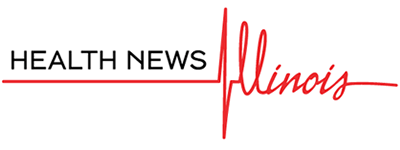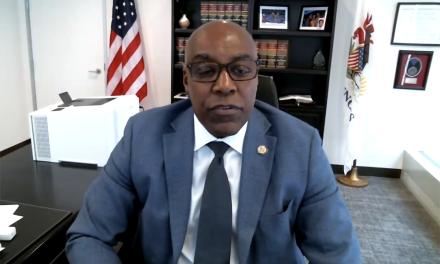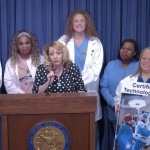
Health economist: Connectivity and trust can expand telehealth
Health economist and advisor Jane Sarasohn-Kahn says digital health has exploded since the pandemic but there are challenges to future expansion. Sarasohn-Kahn, author of a popular health blog told an audience at an OSF OnCall Digital Health Symposium that digital health includes mobile health, wearable devices, virtual visits, remote patient monitoring, personalized medicine and care at home using health IT.
Digital health technologies have allowed people to access care where and when they want it because of computing platforms, software, sensors, and connectivity. But, Sarasohn-Kahn says connectivity is a barrier for some who are experiencing gaps in care.
“Because not everyone has connectivity. It costs money that a lot of people don’t have to spend. So, this is a limiting factor that we can address but we shouldn’t be pollyannish about this for everybody because not everybody can get online, and we learned that during the pandemic.”
Connectivity, says Sarasohn-Kahn, is a social driver of health, much like transportation, food, housing and other social needs. She emphasized that partnerships with community and government organizations will be needed to create what she called “techquity”— tech equity.
Universal access to innovations can help reduce inequities and remove barriers to care for underserved populations. Sarasohn-Kahn points out innovative health systems such as OSF HealthCare are investing in new technologies, providers, and data scientists to drive better health and prevent hospital admissions. Now, evidence is starting to show returns on that investment in better patient care and reduced treatment costs.
Globally, she says for every $1 invested in telehealth, there is a $19 return to the economy in increased productivity and reduced health care costs. But trust is a major factor in driving consumer engagement in telehealth.
Sarasohn-Kahn says misinformation that began during the pandemic and that continues today is driving down trust in health care.
“Without trust, people will not engage with you as a health care provider. There has to be that sacred, and I use the word sacred because it’s real, it’s (a) deep bond of trust and it’s a precursor to health engagement.”
Technology is allowing the movement of more care to the home. Blood tests, labs, and imaging can increasingly be performed in the home or remotely. Sarasohn-Kahn says the growth of digital health apps, digital therapeutics and increased use of sensors integrated with smartphones that can passively monitor patient metrics is advancing convenient care. Plus, there’s been increasing expansion of videoconferencing for virtual visits from anywhere.
She emphasized that health systems can take a lesson from OSF and embrace collaboration to boost trust, access and equity. For example, trusted community organizations can be partners to help build one-on-one relationships with people who don’t trust health care. Once patients engage and have a great experience with a virtual visit or using a platform for health monitoring or other technology, Sarasohn-Kahn suggests they will help others get on board.
“Once you start that process, people will engage, ask more questions and then they become your evangelists in the community. She shared, “I’ve seen this over and over. It takes a lot to get (trust) up, but once you get that relationship going, it can be a beautiful thing.”
Faster computing power and use of generative AI will also transform health care.
Artificial intelligence will be embedded in so many aspects of our lives, including health care. And, with proper governance and ethical use, Sarasohn-Kahn says it can make the most of a shrinking and increasingly burned-out workforce. She outlined several practical applications.
“In research trials, marketing personalization; same way it will have in health care decision making, productivity – not to replace jobs but to enhance people’s ability to do more and have the lower, easy low-hanging-fruit stuff done so that you can concentrate and work at the top of your license whoever you are and not just for clinicians but for all workers to work at the good stuff.”
From her research and personal experience Sarasohn-Kahn says its clear health consumers have mixed feelings about AI and data privacy. But, she says many are willing to share their data if they see the value in doing so. For consumers, she advises making sure to use apps that are HIPPA compliant (legislation that protects personal health information).
Finally, what is also needed to drive more engagement with telehealth? Sarasohn-Kahn says a federal data privacy law that mirrors what is in place in Europe, based on the premise that all consumers should have complete control over their own personal data.






